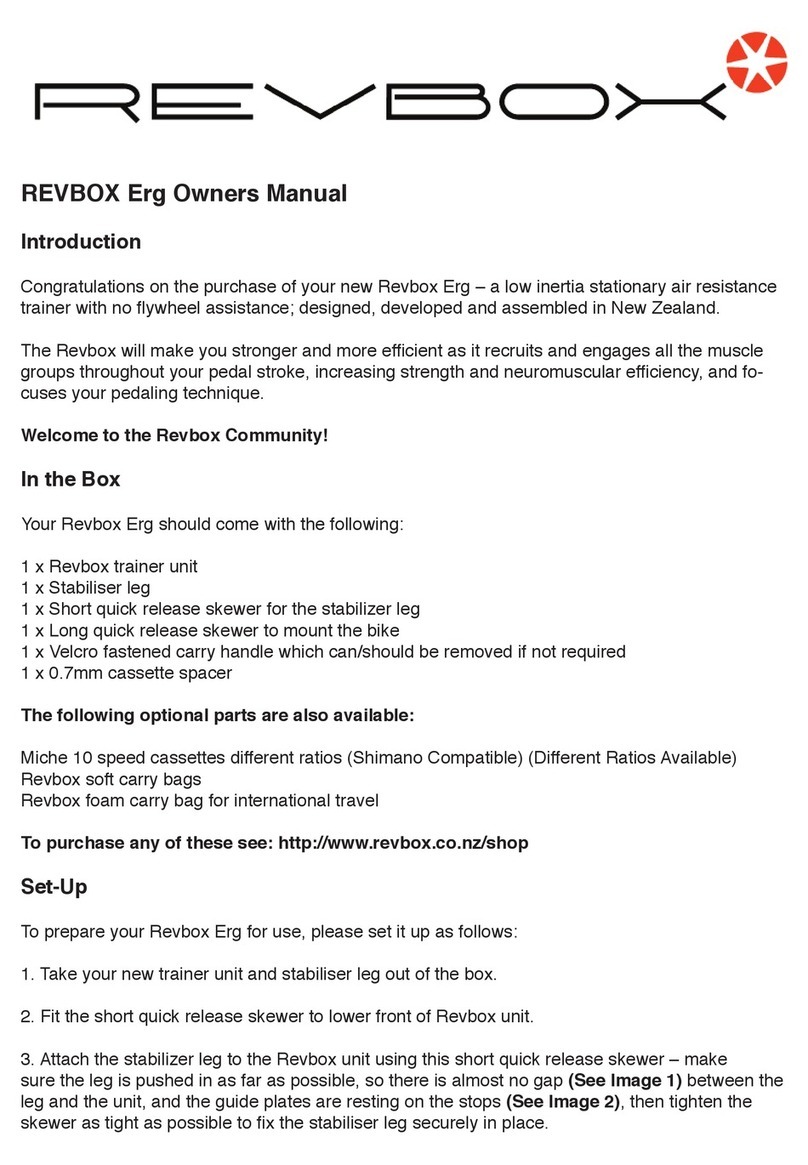MAIN-
TENANCE
Although the Revbox is largely maintenance
free, there are a few small things you can
do to enhance the longevity of your unit.
1. After about every two weeks of use, check and
tighten all the bolts on the unit with a torque
wrench – they should be tightened to 8Nm.
2. Periodically check the chain on the Revbox
to make sure it is not becoming too slack. We
recommend checking after every 6 hours of
use, especially in the first month. The chain
should have no more than 5mm slack where
it first comes into contact with the top of the
chainring. If there is more movement than this,
adjust the chain tension as follows:
a. Loosen the 2 bolts of the fan unit at the
center of the main side panels
b. Adjust the chain tensioner to the correct
position (position 9 or max 10) on both sides
and make sure the fan is perfectly straight.
The notches of the chain tensioner must be
fully engaged with bolt head in front.
c. Re-tighten the bolts to 8Nm with a torque
wrench, starting with the drive-side bolt, and
making sure that the fan remains straight. The
fan blades should not be within 10mm of the
chain in any part of the fan’s revolution.
d. Recheck the chain to make
sure the tension is correct.
3. The lube on the chain from new will
last for a long time, but when it eventually
requires a re-lube, only use a silicone
lubricant. (This can also be applied to the
cassette if required).




























